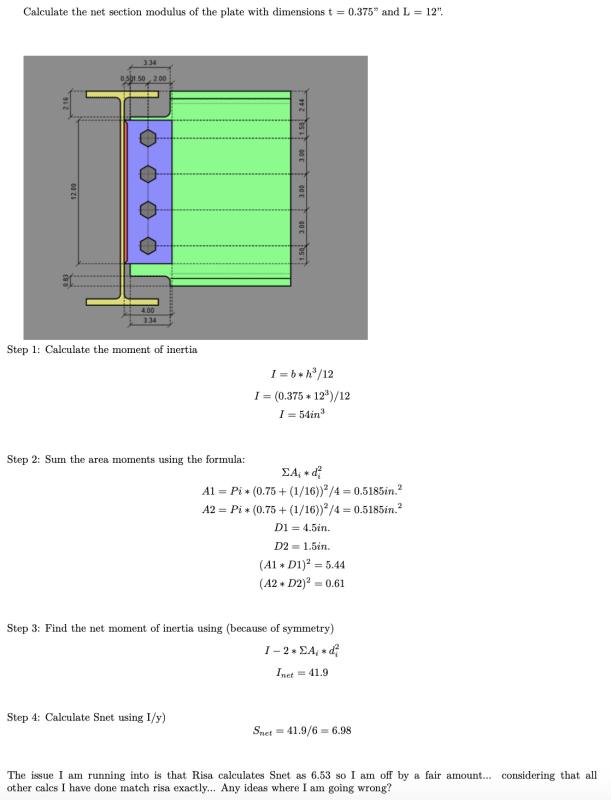TylerM94
Structural
- Jun 2, 2020
- 26
Hi,
I'm trying to learn about connection design. I'm a new structural engineer working on a lot of CA and shop drawing review. The engineer has calculated a number of limit states for connections involving Snet including Coped Beam Flexural Rupture. Plate Flexural Buckling, and Coped Beam Lateral Torsional Buckling.
Would someone be able to help me understand the procedure for calculating Snet for a plate? I have attached an AISC connection example for reference.
I know the connection design calculations are ultimately the responsibility of the fabricator but I would like to be able to verify some of their standard connections and advance my own understanding.
My understanding of the net Section modulus is that it's My/I, taking into account the effect of the bolt holes but I'm having trouble putting this into practice.
I'm trying to learn about connection design. I'm a new structural engineer working on a lot of CA and shop drawing review. The engineer has calculated a number of limit states for connections involving Snet including Coped Beam Flexural Rupture. Plate Flexural Buckling, and Coped Beam Lateral Torsional Buckling.
Would someone be able to help me understand the procedure for calculating Snet for a plate? I have attached an AISC connection example for reference.
I know the connection design calculations are ultimately the responsibility of the fabricator but I would like to be able to verify some of their standard connections and advance my own understanding.
My understanding of the net Section modulus is that it's My/I, taking into account the effect of the bolt holes but I'm having trouble putting this into practice.


